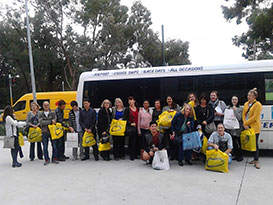The sand dunes at the Kurnel peninsula, north of Cronulla, are a renowned natural landmark in Sydney’s Sutherland Shire.
The Sand Dune system is believed to have been formed when the sea reached its current level around 15,000 years ago. The Kurnell peninsula was originally an island, with three rivers meeting at the current location of Wanda Beach. As time proceeded, sand rose and blocked mouth of the three rivers, thus resulting in the Kurnell island becoming an extension of the peninsula.
The Sand Dunes were originally inhabited by the Gweagal people of the Tharawal nation, and possess much cultural significance to First Nations people. The site has many historical artefacts from its Aboriginal inhabitants, including carvings and ceremonial sites. Due to an abundance of food sources in and around the dunes location, and a wide variety of flora that included plants that served medicinal purposes, the Aboriginals who inhabited the Kurnell peninsula were almost certainly non-nomadic. Many carvings found around the site solidify this claim. The Gweagal people were also guardians to the white clay pits of the region, which were deemed as sacred and had many purposes. A small group of native Gweagal people living in accordance to their traditions occupy part of the site to this day.
The Kurnell Peninsula just north of the sand dunes, was the landing place of Captain James Cook on April 29th, 1770. Cook made his way to the current location of the dunes, which were then completely covered in vegetation. As a result, they were given no mention in written accounts of the time.
The first land grant on the land was issued in 1815 when the merchant James Birnie was given proprietorship over the region, which included salt marshes and Cook’s landing point. He constructed a cottage there for himself. In 1821, another portion of the land was granted to John Connell, a free settler and iron manufacturer. In 1828, he took custodianship over Birnie’s land, and built a new home for himself.
Connell’s sons began harvesting timber on the site in 1835. They oversaw the construction of a canal in the 1840s, which stretched from Woolooware Bay to Botany Bay. This was to rendezvous with merchant boats which would eventually transport the timber to Port Jackson (Sydney Harbour).
The first Crown auctions on the land took place in 1865, and 700 acres were purchased by John Connell Laycock.
Laycock’s estate was subsequently purchased by grazer Thomas Holt in 1871.
Holt cleared much of the remaining vegetation and sought to use the land for cattle grazing. This venture however proved a failure as both his sheep and bovine contracted illnesses, and their excessive grazing over the grass surface eventually exposed the layers of sand beneath. During this time, the sand began to grow at a rate of eight metres per year, and eventually, the dunes came to resemble their current form. This process prompted Holt to terminate his venture and he departed the site.
By the 1920s, the sand dunes now graced the Kurnell peninsula fully. Following Holt’s departure, they were abandoned for several decades and were seen as lacking in any aesthetic or economic value. However, this time coincided with the rise of Cronulla’s popularity as a venture for beachgoers. As a result, public interest in the dunes was rekindled, and they came to be seen as something rather unique.
During the 1920s-50s, the dunes became popular with sandboarding. This period also saw the dunes featuring in films, including 40,000 Horsemen (1941) and The Rats of Tobruk (1944).
Public interest in the dunes also reached the world of business during the 1930s, which to some degree, sadly proved detrimental to the dunes’ preservation. In 1937, the council voted against a purchase by Haymarket Land and Building Co. which would have resulted in the region becoming an official National Park.
During the same period, Thomas Holt’s descendants began salt mining operations on the site. These operations continued from 1933-1990 .
In 1951, Caltex Oil Company approached Sutherland Shire Council and request that they be granted a permit to build a refinery at Kurnell, adjacent to the dunes. After an initial rejection, the council capitulated and a subsidiary of Caltex began operations at the site in 1954.
Industrial and corporate interest in the site continued in the latter 20th century and into the 21st.
In 1986, the German pharmaceutical company Bayer sought to build a factory on the site. This proposal was eventually rejected, following public protests and a Commission of Inquiry.
In 2004, part of the land was cleared for housing development by Australand. After an initial Council rejection, Australand took the matter to court and won the appeal. Construction went ahead, and was to such a magnitude that it resulted in the creation of a new mini suburb, Greenhills Beach, which was declared in 2011.
Caltex’s refinery at Kurnell shut operations in 2014 after sixty years.
The recent business ventures on the site have proved immensely detrimental to the dune’s conservation and perpetuation as an iconic natural attraction. Since the Holt family began sand mining in 1933 (and concluded in 1990), seventy million tonnes of sand have been lost, reducing the dunes significantly in size. The wetlands adjacent to the dunes are home to the endangered green and golden bell frog and a wide variety of ecosystems. These environmental factors were a motivating factor of the Council when seeking an injunction against Australand’s development initiatives in the mid 2000’s.
At the present, following further development in 2015-16, the dunes that attracted filmmakers and beachgoers in decades gone by are barely recognisable, much of the once sandy hills which graced the peninsula now being covered with pavements and modern housing. Despite this, the remaining sand dunes still remain a popular feature of the area around Cronulla Beach. Today, the dunes continue to attract beachgoers and tourists alike, and are used as a training location for many sports persons and teams, including boxer Anthony Mundine and local NRL side the Cronulla Sharks.








